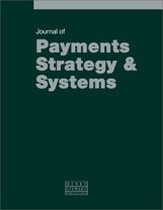Electronic payments and remote deposits: Will banks move past products to solutions?
Abstract
The shift to electronic payments throughout the
US economy is driven by an irresistible logic of cost
savings and convenience for customers and financial
institutions, but, in some ways, the changeover from
paper to digital has been piecemeal and slow. Adoption
of electronic payments has advanced the most through
consumer use of credit and debit cards, as well as
banks' and businesses' provision of technology to
support the cards. Although cheque writing has declined
in the past decade, cheques remain the most common
form of non-cash payment. Businesses still handle
billions of those cheques manually and deposit them
through traditional processes, which involve carrying
stacks of paper to a bank. Since the Check Clearing
for the 21st Century Act (Check 21) took effect in
2004, electronic cheque-handling systems have broached
the mainstream of business. Users range from giant
retail chains to small independent companies, and
techniques such as remote deposit capture have gained
acceptance. But studies show that adoption has a long
way to go. The latest Federal Reserve survey of depository
institutions found 57 per cent of inter-bank cheques
in 2007 were presented to the paying bank in the form
of original paper cheques, and 15 per cent more were
presented as substitute cheques or electronic with
paper to follow. Fewer than one-third were converted
to electronic form and deposited remotely — a lost
opportunity for businesses and their banks. This paper
argues that financial institutions must integrate
tools such as remote deposit into comprehensive solutions
for businesses, driven by the customers' desire to
drive efficiency and strengthen security in treasury
management. The increasing commitment of banks to
building customer relationships on a digital platform
will accelerate a shift from products to solutions
— and transform bankers from selling services to
serving as true partners.
The full article is available to subscribers to the journal.
